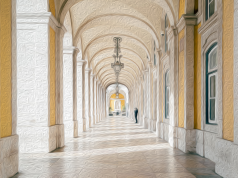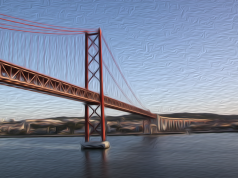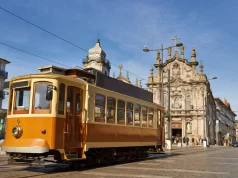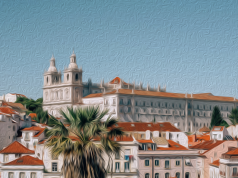Being one of the largest bridges in the world, Vasco da Gama Bridge connects Lisbon to southern Portugal and Spain. As you’d imagine, it takes its name from the famous explorer of Portugal Vasco da Gama.
Following the promenade of the Parque das Nações district, you can easily walk under the bridge.
Technical Overview & Key Figures
The length of the bridge is 13 km (8 miles). It consists of five different parts. These include the northern viaduct, the expo viaduct, the cable-stayed bridge, the central viaduct, and the southern viaduct, including the interchanges. The project consistency was strengthened by satellite coordination. The importance of this new technology is undeniable. The land curving and the bridge length would have deteriorated the project by a meter without this technology.
It is also an earthquake-resistant bridge. You may have heard about the great earthquake of 1755, which has been the largest one in Portugal’s history. This is why it was designed considering a possible big earthquake. In this way, now the bridge can resist an earthquake 4.5 times greater than the standards of building resistance in Lisbon. Accordingly, a shock absorber is available on its northern viaduct. This is able to absorb longitudinal shifting if there is an earthquake. The deck of the bridge also is not fixed to its pylons, and it can move lengthwise and sideways. The piers can also endure long periods of vibration. The hydraulic couplings on the main viaduct piers also block the viaduct in case of an earthquake.
History of Vasco da Gama Bridge
The Portuguese government decided to construct a bridge over the Tagus river. The reason was that the 25 de Abril suspension bridge was insufficient. So, in 1991, it made an international call for the construction of a bridge. As a result, Lusoponte, which is the concession consortium was awarded the contract in 1994.
According to the contract, they would inaugurate the bridge at the Lisbon World Fair of 1998. The Novaponte group undertook this construction. It started construction in January 1995. Finally, the inauguration happened three years later on the determined date.
Construction & Cost
The cost of the project was $1.1 billion, divided into four parts. Each of them was built by a different company and supervised by an independent consortium.
Around 3,300 workers simultaneously worked on the project. The preparation took 18 months, and another 18 months passed for the construction. Through the build-operate-transfer system, Lusoponte supported the financing, and it is receiving the tolls of both Lisbon bridges in the first 40 years.
It also has a life expectancy of 120 years. It was constructed to resist wind speeds of 250 km/h (155 mph).
Down to 95 meters under mean sea level, deep foundation piles of up to 2.2 m (7.2 ft) were placed. Also, they extended the left-bank viaducts inland to protect the marshes beneath. They also tilted the lamb posts inwards in order not to cast light on the river.
Toll
Although traveling to the northward (Lisbon) is subject to a toll, going to the southward is free. On the south bank of Tagus, there is a toll plaza. Through the toll plaza, you pay your tolls. As of 2020, for passenger cars, the tax is €2,85, and for trucks, it is €12,20.
Nearby Attractions
The restaurant at the top of the Vasco da Gama Tower will offer a great view over the bridge. You can also choose a cable car ride. It also starts by the tower.
Within walking distance, you’ll also find the Oceanarium and the casino. They are in the Parque das Nações district.
If you wonder about other famous bridges in Lisbon, you can check on Ponte 25 de Abril Lisbon article.
FAQ
Where is the Vasco da Gama Bridge?
The bridge is in Lisbon, spanning over the Tagus River.
How to Get to Vasco da Gama Bridge?
On the red line, you’ll find the metro station Moscavide. This is the closest station to the bridge. Upon exiting the station, walk towards the river. Then you will see the Vasco da Gama Tower. The bridge is also quite close to it. Taking the metro to Oriente station is another option. In this case, walk down the waterfront promenade towards the bridge.
Through your Lisboa Card, you can use the metro, buses, trams, funiculars, and trains for free.






